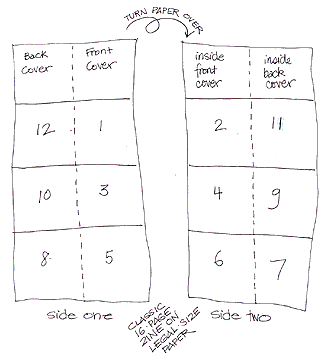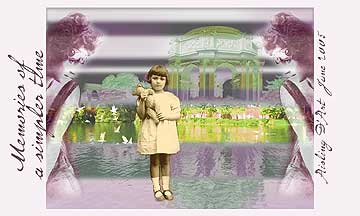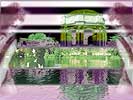
A sketchcrawl is a full-day of sketching or drawing in a journal, or on some other art materials such as paper, canvas, etc.
It’s usually part of a stroll, alone or with a group, looking at scenery at or near a specific destination.
Sketchcrawl Supplies
It’s best to use whatever sketching supplies you’re most comfortable with. They should be light and portable.
Be sure you can use then while standing, with no other support to lean against.
Here’s what I carry with me:
A small notebook or sketchpad as a journal.
Suggested: US Art Supply’s 5.5″ x 8.5″ set of sketchbooks. The covers provide good support for sketching while standing up
A pen or pencil, for drawing lines.
Suggested: Any everyday pencil, if you’re planning simple line drawings. I like an HB (lead firmness) pencil, or a standard 2B school-type pencil. If you’re going to do shaded sketches entirely in pencil, it’s good to use a set of pencils. Amazon Basics’ set is pretty good and includes erasers and sharpeners.
My favorite pen for drawing lines is Sakura’s Pigma Micron, with an 08 tip. It’s waterproof, so I can use watercolors or felt coloring pens over it, almost immediately.
An eraser, if you’re sketching with a pencil.
Suggested: I carry both a kneaded rubber eraser and a standard drafting-style eraser. (Both are in the Amazon Basics set.)
Something to add color, like watercolors (and water, and a brush), or colored pens or pencils.
Suggested: The Sakura Koi set of watercolors is very good. If you’re going to use colored pencils, Sargent makes a good, portable set. But, you may want to try something unusual, like a Petallush pencil. (Note: I haven’t tried them for sketchcrawls, yet.
Tape, to fasten ephemera in your art journal.
Suggested: I’d use a temporary tape, like blue painter’s tape in a narrow width. Then I’d use glue or something more permanent once I returned home. (Then I can decide the best position, angle, or page for whatever the ephemera is.)
Snacks, in case you get hungry.
Suggested: Carry both a protein-rich snack (like a protein bar for sustained energy) and something sugary (for a quick, late-in-the-day burst of energy).
Optional: A camera (you can use your phone), in case you want to add printed photos to your journal, later.
In general, I suggest keeping your art supplies simple and as light (and perhaps small) as possible.
The most essential item will be your sketchpad or journal. Be sure you can lean on it and sketch without other support.
More Sketchcrawl Supplies Ideas
Can’t find the perfect watercolor set? Here are some ideas for making your own mini-watercolor palette:
What a Sketchcrawl Journal Looks Like
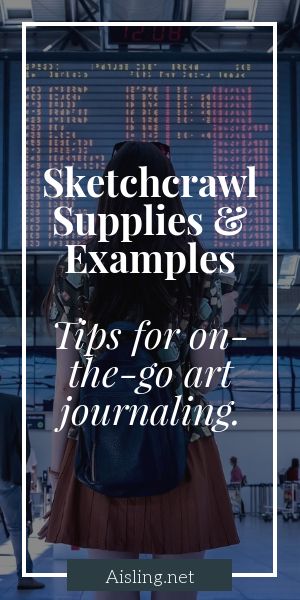 Your sketchcrawl journal (or sketches) will look like whatever YOU decide.
Your sketchcrawl journal (or sketches) will look like whatever YOU decide.
There are no rules.
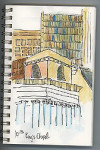 Would you like to see an example?
Would you like to see an example?
In July 2009, I took part in a sketchcrawl around Boston’s Freedom Trail. (You can see some of those sketches and photos at Sketchcrawl Notes – July 2009.)
Sketchcrawls are great practice for creating travel journals, too. The materials & techniques are the same.
See if you enjoy it!
Get Started Now
You can go on your first sketchcrawl right now.
You could try a sketchcrawl somewhere near your home, even in your backyard.
Then, try a few more sketchcrawls, on your own or with friends.
It’s okay to organize your own sketchcrawls. This has always been a very fun, informal way to create art as you explore cool and interesting locations.
Online, you may find sketchcrawl announcements, too.*
You can follow me at Facebook (as “Aisling Creates”) for my sketchcrawl plans, and other artsy news.
Sketchcrawls – Not Just for Walking Tours
You can use those same sketchcrawl supplies — carried in your purse or backpack — when you travel. Whether it’s a daytrip, a road trip, a holiday, or a vacation, sketching can provide you with wonderful keepsakes when you get home.
(Traveling on a plane? remember some airlines’ four-ounce rule on liquids… no big containers of gel medium, glue, or tubes of paint.)
For me, sketching – with pencil, pen, markers, or watercolors – is a relaxing way to enjoy the scenery, wherever I am. Whether it’s a local scene or a trip abroad, art journaling helps me notice — and appreciate — more of what’s around me.
*Note: The sketchcrawl (dot com) site is one place you’ll find sketchcrawls announced.
However, that site’s owner claims that the term “sketchcrawl” is trademarked. Umm… no. Checking the trademark registry regularly, I still don’t see sketchcrawl registered as a trademark.
I’m not sure it can be trademarked (or copyrighted) since the term has been in use for decades, or perhaps longer. Not unless it’s connected with a very specific project, and only for that particular use. (For example, “ghost hunters” couldn’t be trademarked, but it could be licensed, just for the TV series.)
So, I’m reluctant to recommend that sketchcrawl website.
 There are as many ways to create, modify & embellish a single-sheet zine as there are artists.
There are as many ways to create, modify & embellish a single-sheet zine as there are artists.
 4. Flatten the sheet so you can photocopy (or scan) it.
4. Flatten the sheet so you can photocopy (or scan) it.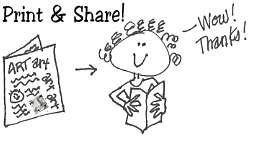



 Your sketchcrawl journal (or sketches) will look like whatever YOU decide.
Your sketchcrawl journal (or sketches) will look like whatever YOU decide.
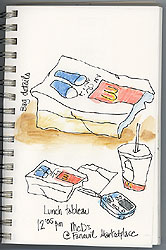
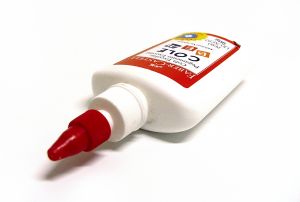 This is from my archives, when I sent “creative somethings” (including zines) to my subscribers.
This is from my archives, when I sent “creative somethings” (including zines) to my subscribers.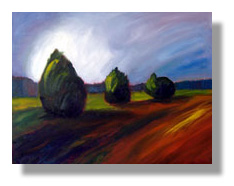 I paint with oils and acrylics. My canvases can be 36″ x 48″ or larger, and as tiny as 3″ x 3″. It’s easy to lose the little canvases and difficult to store the huge ones. They end up in boxes, behind doors, in closets, under beds, etc.
I paint with oils and acrylics. My canvases can be 36″ x 48″ or larger, and as tiny as 3″ x 3″. It’s easy to lose the little canvases and difficult to store the huge ones. They end up in boxes, behind doors, in closets, under beds, etc. I often think of myself as a magpie, in a way.
I often think of myself as a magpie, in a way.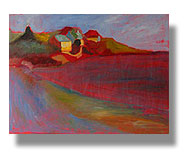 At least half a dozen paintings were in limbo, waiting for the technique I’m currently developing in my work. (The photo at right is an example. It’s barely started, but I love the glow of the houses facing the sunlight.)
At least half a dozen paintings were in limbo, waiting for the technique I’m currently developing in my work. (The photo at right is an example. It’s barely started, but I love the glow of the houses facing the sunlight.)